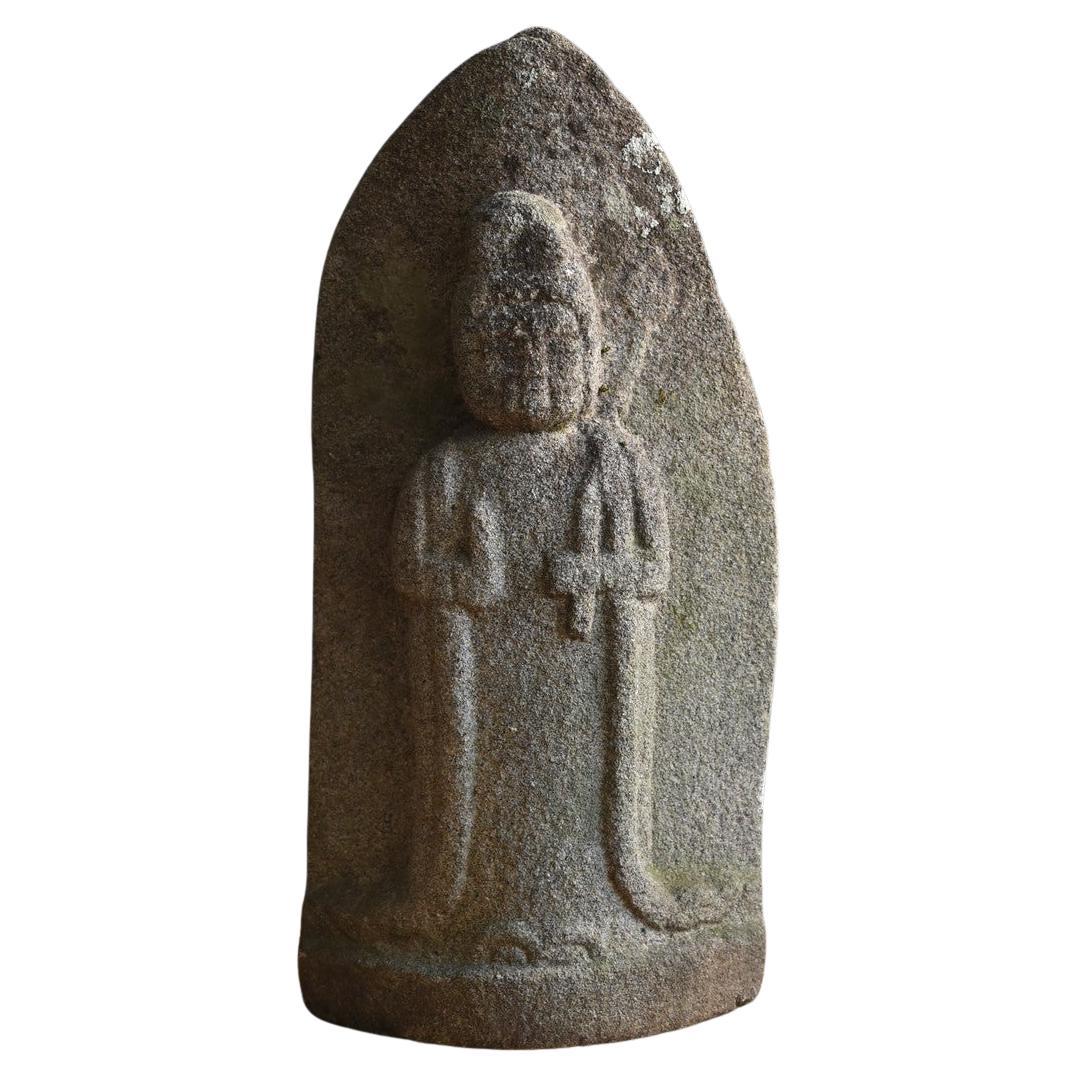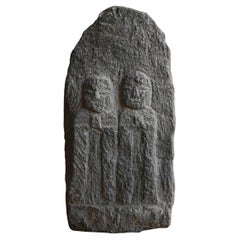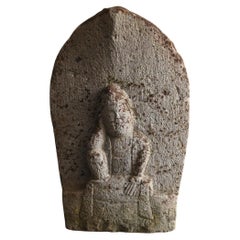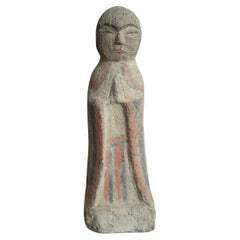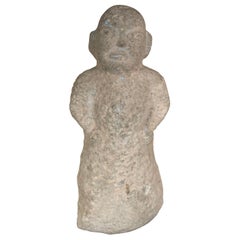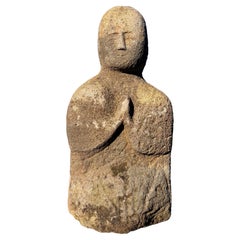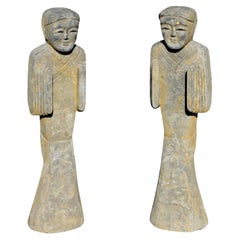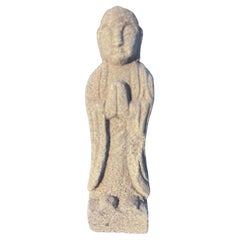Items Similar to Japanese antique two-piece stone statue of a monk/God of the road/Edo period
Want more images or videos?
Request additional images or videos from the seller
1 of 13
Japanese antique two-piece stone statue of a monk/God of the road/Edo period
$700
£540.87
€625.30
CA$989.15
A$1,109.40
CHF 580.97
MX$13,480.27
NOK 7,377.41
SEK 6,994.30
DKK 4,667.53
About the Item
We have a rare stone Buddha in stock.
This is a small twin-figure stone carving made in the early to middle Edo period (1600–1800). It features two standing monk-like deities side by side, carved in low relief. While they resemble Jizo Bodhisattva in appearance, this type of stone image is also identified in Japan as Dosojin—local guardian gods who protect travelers and community boundaries.
This particular piece was sourced in Gunma Prefecture, and it is believed to have been created in that region or nearby. Statues of this kind were commonly produced in Gunma and Nagano Prefectures, where village-based faith traditions flourished. The figures were likely not sculpted by a professional Buddhist sculptor, but instead by a village carpenter, a local monk, or someone with modest carving skills. That humble origin is reflected in the simplicity and warmth of the design.
Unlike the high-relief stone Buddhas found in temples, this Dosojin is charmingly rustic and minimalistic. You can sense the heartfelt prayers of the people who once relied on its protection. These stone guardians were often enshrined at village borders or crossroads to ensure the safety of travelers and ward off misfortune. In some communities, they are still honored today during events like the Dondo-yaki fire festival, performed in front of Dosojin statues—a reminder of their enduring role in local spiritual life.
Also, a similar piece was featured in an art book, so I have included a photo of it as a reference.
In Japanese spiritual tradition, gods and Buddhas coexist harmoniously. In this context, Dosojin may represent divine figures that take on the appearance of monk-like forms such as Jizo. The carving’s gentle faces and symmetrical posture express quiet strength and serenity.
This statue is compact and portable, measuring W10 × D7.5 × H23cm and weighing 2.45kg. It can stand on its own, but it is prone to falling over, so it is a good idea to lean it against a wall in a room, or bury it in the soil a little in a garden
Today, it is increasingly rare to find such statues in the marketplace, making this a special piece for collectors or those who appreciate the spiritual beauty of folk traditions.
Why not display it by your front door, in your garden, or even on an indoor shelf? Its presence will bring a gentle, grounding energy to any space.
Also, I want many people to know the goodness of antiques, so I set the price reasonably.
How about showing off to your friends around you?
Weight: 2.45kg
Size: W10 × D7.5 × H23cm
Stone: Andesite
Item number:SC116
[We mainly sell old Japanese items.
We've seen tens of thousands of items so far.
Taking advantage of that experience, we are posting attractive items here.
We are able to do this because we have many years of experience.
There are parts of Japan that are familiar to Japanese people but are still unknown to the rest of the world.
We will continue to offer products that will allow you to fully experience this feeling.]
- Dimensions:Height: 9.06 in (23 cm)Width: 3.94 in (10 cm)Depth: 2.96 in (7.5 cm)
- Style:Edo (Of the Period)
- Materials and Techniques:
- Place of Origin:
- Period:
- Date of Manufacture:1600-1800
- Condition:It can stand on its own, but it is prone to falling over, so it is a good idea to lean it against a wall in a room, or bury it in the soil a little in a garden.
- Seller Location:Sammu-shi, JP
- Reference Number:1stDibs: LU5487245033662
About the Seller
5.0
Platinum Seller
Premium sellers with a 4.7+ rating and 24-hour response times
Established in 2015
1stDibs seller since 2020
1,606 sales on 1stDibs
Typical response time: 6 hours
- ShippingRetrieving quote...Shipping from: senzoku, Japan
- Return Policy
Authenticity Guarantee
In the unlikely event there’s an issue with an item’s authenticity, contact us within 1 year for a full refund. DetailsMoney-Back Guarantee
If your item is not as described, is damaged in transit, or does not arrive, contact us within 7 days for a full refund. Details24-Hour Cancellation
You have a 24-hour grace period in which to reconsider your purchase, with no questions asked.Vetted Professional Sellers
Our world-class sellers must adhere to strict standards for service and quality, maintaining the integrity of our listings.Price-Match Guarantee
If you find that a seller listed the same item for a lower price elsewhere, we’ll match it.Trusted Global Delivery
Our best-in-class carrier network provides specialized shipping options worldwide, including custom delivery.More From This Seller
View AllJapanese small antique travel gods or dosojin/stone Buddha/1600-1800/Edo period
Located in Sammu-shi, Chiba
This is a stone statue of two priestly deities carved side by side, believed to have been made in the mid to late Edo period (around the 18th to 19th century), and is one of the obje...
Category
Antique 17th Century Sculptures and Carvings
Materials
Granite
$640 Sale Price
20% Off
Japanese antique Kannon stone statue/Edo period/Buddhist ornament
Located in Sammu-shi, Chiba
This is a stone statue of Kannon Bosatsu (the Bodhisattva of Compassion), believed to have been made in Japan during the mid to late Edo period (late 18th century onward). The materi...
Category
Antique Early 19th Century Japanese Edo Figurative Sculptures
Materials
Stone
Japanese antique Kannon stone statue/Edo period/18th to 19th century
Located in Sammu-shi, Chiba
Introducing a stone Buddha of Nyoirin Kannon, created in the mid to late Edo period (circa 1750-1850).
The material used is granite or andesite, and the natural weathering of the sto...
Category
Antique Early 19th Century Japanese Edo Garden Ornaments
Materials
Stone
Small Edo period stone Buddha from Japan/Jizo Bodhisattva/1800s/Amulet
Located in Sammu-shi, Chiba
This is a small stone statue believed to have been made in Japan during the Edo period. It was placed at crossroads, village entrances, or along mountain paths to pray for the safety...
Category
Antique 19th Century Japanese Edo Figurative Sculptures
Materials
Stone
Japanese antique stone god/[Daikokuten]/Stone Buddhas from the Edo period
Located in Sammu-shi, Chiba
Do you know what Daikokuten is?
This god in Japan is an old god who has existed since the end of the Muromachi period (16th century) as one of the seven gods who bestow happiness.
He...
Category
Antique 18th Century Japanese Edo Sculptures and Carvings
Materials
Stone
Japanese Edo Period Kannon Stone Buddha/1700-1850/Garden Ornament
Located in Sammu-shi, Chiba
We are pleased to present a simple stone Buddha of Kannon Bosatsu, made in Japan during the Edo period (circa 1700-1850).
Kannon Bosatsu is known in Buddhism as a merciful savior wh...
Category
Antique 18th Century Japanese Edo Garden Ornaments
Materials
Stone, Granite
You May Also Like
Chinese Ancient Stone Male Figure, 206 BC-220 AD
Located in South Burlington, VT
China, a rare hand carved stone male figure from the Han dynasty (206 BCE-220 CE).
Dimensions: 16 inches tall on its custom stand and and 6 inches wide
Condition: old patina wi...
Category
Antique 15th Century and Earlier Chinese Han Sculptures and Carvings
Materials
Stone
$2,800 Sale Price
27% Off
Japanese Seated Praying Buddha Handsome Antique Stone
Located in South Burlington, VT
An older and substantial late 19th to early 20th century stone Buddha/Jizo Guardian sculpture in a mudra of prayer
Good garden candidate
In Japan, Kṣitigarbha, known as Jizō, or re...
Category
Early 20th Century Japanese Meiji Sculptures and Carvings
Materials
Stone, Granite
$1,480 Sale Price / set
20% Off
Pair of Antique Stone Figures Statues Han Style
Located in Somis, CA
A pair of vintage solid stone court attendants. Of tall slender form, wearing long flowing robes flaring at the bottom with hands within wide, decorative cuffs. The realistically mod...
Category
Mid-20th Century Chinese Han Sculptures and Carvings
Materials
Stone
$15,500 / set
Japanese Tall 100 Year Old Stone Buddha, Hands in Prayer
Located in South Burlington, VT
A very good hand carved stone Buddha/Jizo Guardian sculpture set upon its own carved base
Good display candidate for your favorite indoor or outdoor space
In Japan, Kṣitigarbha, kn...
Category
Early 20th Century Japanese Edo Sculptures and Carvings
Materials
Stone
Japan Large Stone Sculpture Double Buddha Jizo
Located in South Burlington, VT
Large work of garden art, 18th/19th century, 200 years old
Japanese stone rectangular plaque Jizo Bosatsu in unusual "double Jizo" Desojin panel form. It stands tall in a fine m...
Category
Antique 19th Century Japanese Edo Sculptures and Carvings
Materials
Granite
$3,040 Sale Price
20% Off
Japan Tall Hand-Carved Garden Stone Effigy of Smiling Ebisu God of Prosperity
Located in South Burlington, VT
Japan, an old early 20th century tall hand-carved stone image of Ebisu one of Japan's seven lucky gods signifying prosperity, good business, and patron of fishermen, circa 1920. He ...
Category
Early 20th Century Japanese Taisho Sculptures and Carvings
Materials
Stone
More Ways To Browse
Antique Carpenter
Antique Japanese Book
Middle Temple
Sculpture Wall Shelf
Antique Marketplace
Guardian Statues
Antique Japanese Shelf
Carved Book Stand
Antique Wall Display Shelf
Antique Display Shelf Stand
Garden Buddha
Prayer Stand
Japanese Compact
Buddha Wall
Garden Sculptures Faces
Antique Prayer Stand
Standing Buddha Statue
Bodhisattva Statue
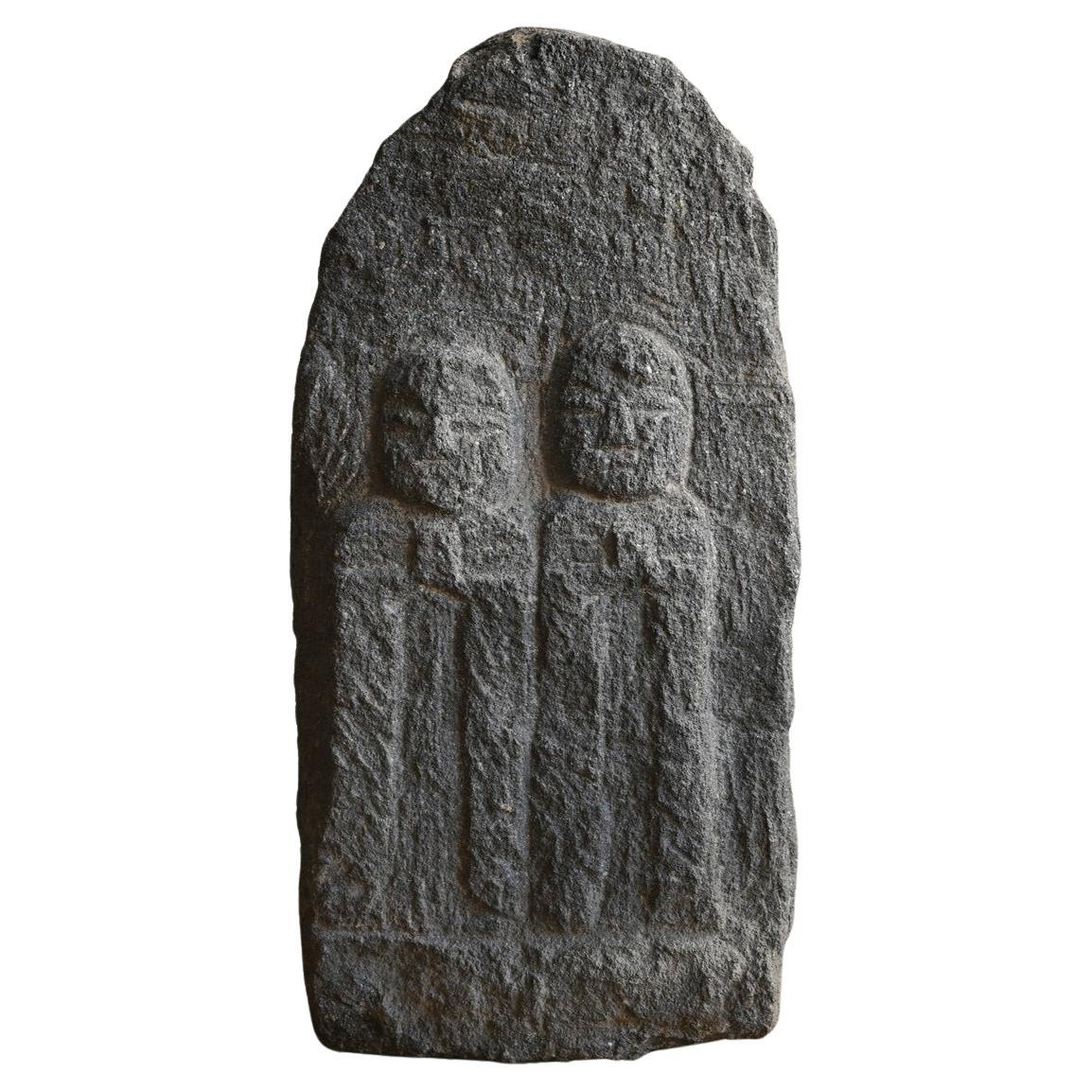
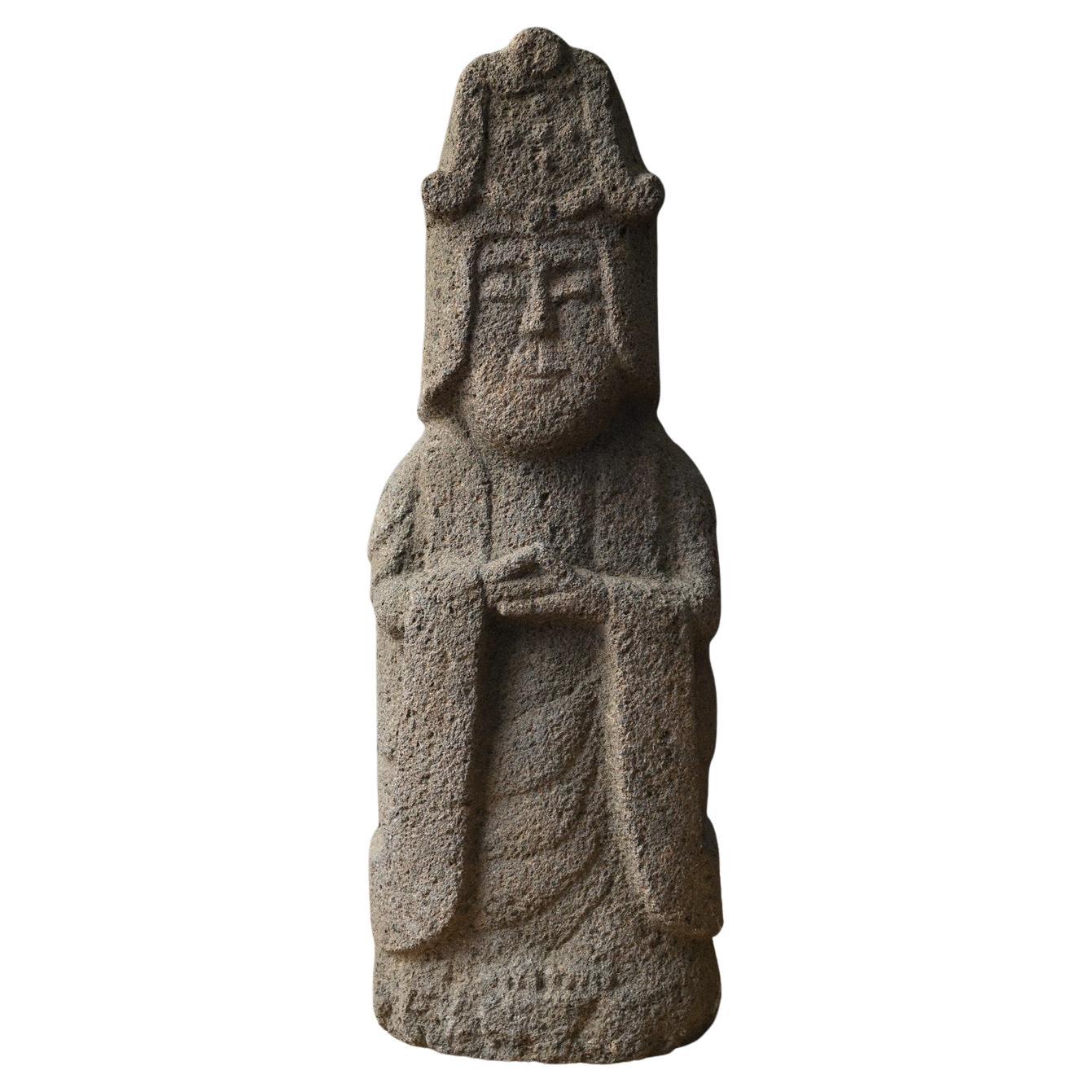
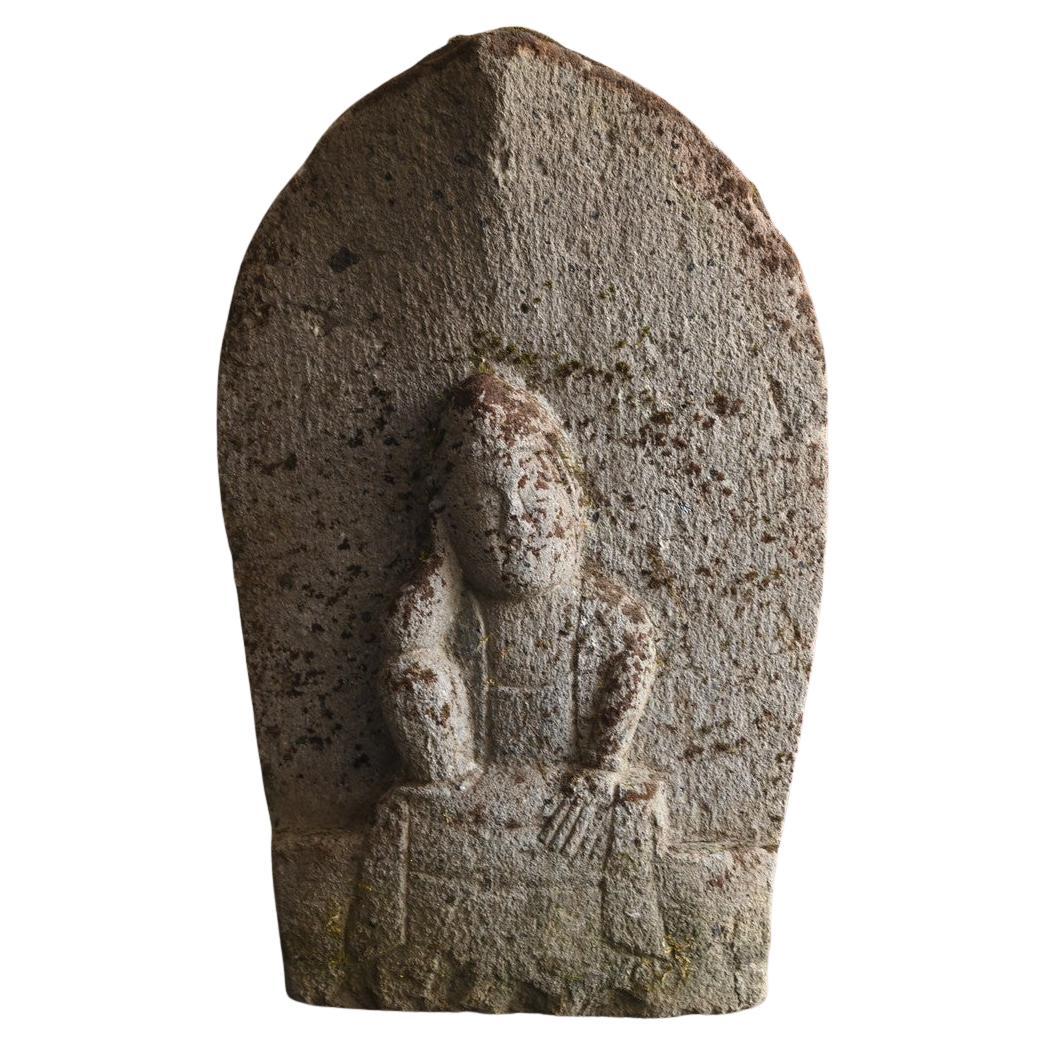
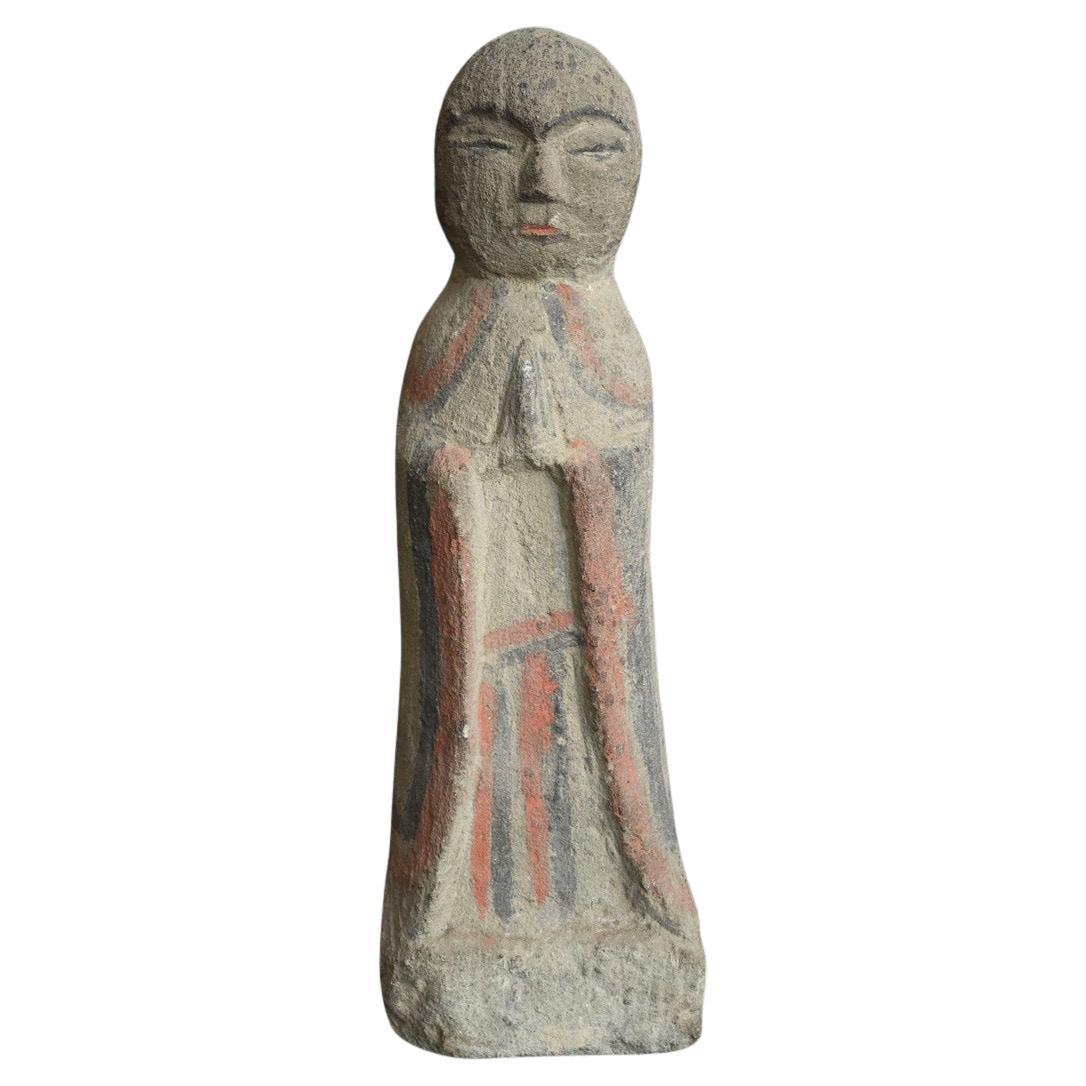
![Japanese antique stone god/[Daikokuten]/Stone Buddhas from the Edo period](https://a.1stdibscdn.com/japanese-antique-stone-god-daikokuten-stone-buddhas-from-the-edo-period-for-sale/f_54872/f_406808721721288384637/f_40680872_1721288385010_bg_processed.jpg)
